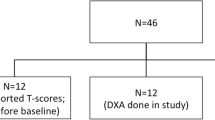Abstract:
The aim of the study was to analyze the relation between sports and bone mass. Seven hundred and four men with no history of chronic disease were questioned on their adolescent and adult sporting activities. Their total body (TB) and regional (head, spine, arms and legs) bone mineral density (BMD) were measured by dual-energy X-ray absorptiometry. BMD measurements and ratios of regional BMD to TB BMD were compared using a multiple regression analysis. Probands (mean age 30 years) were engaged in 14 sports activities: rugby, soccer, other team sports, endurance running, fighting sports, bodybuilding, multiple weightbearing activities, swimming, swimming with flippers, biking, rowing, climbing, triathlon and multiple mixed activities. They stated that they were practising a physical activity at the amateur level: 7.1 h/week between the ages of 11 and 18 years and 9 h/week between age 18 years and the day of the interview (no significant difference between physical activities). Rowers and swimmers had low TB BMD (1.22 and 1.17 g/cm2) and low leg BMD (1.37 and 1.31 g/cm2). Participants in rugby, soccer, other team sports and fighting sports had a high TB BMD (1.27–1.35 g/cm2) and high leg BMD (1.41–1.5 g/cm2). For head BMD, there was no stastistical difference among the different groups. Constructed ratios pointed out the site-specific adaptation of the skeleton: soccer player and runners had a higher leg ratio; bodybuilders, fighters, climbers and swimmers had a higher arm ratio; rugby players had a higher spine ratio. Head ratio was higher in non-weightbearing sports (rowing, swimming) than in weightbearing sports (rugby, team sports, soccer, fighting sports and bodybuilding). Thus the BMD and ratio differences among the 14 disciplines seem to be site-specific and related to the supposedly high and unusual strains created at certain sites during sport training by muscle stress and gravitational forces. Head ratio is closely related to the type of practice; its value could predict whether sport participants have developed the maximal peak bone mass they could achieve.
Similar content being viewed by others

Author information
Authors and Affiliations
Additional information
Received: November 1999 / Accepted: 12 September 2000
Rights and permissions
About this article
Cite this article
Morel, J., Combe, B., Francisco, J. et al. Bone Mineral Density of 704 Amateur Sportsmen Involved in Different Physical Activities . Osteoporos Int 12, 152–157 (2001). https://doi.org/10.1007/s001980170148
Issue Date:
DOI: https://doi.org/10.1007/s001980170148



